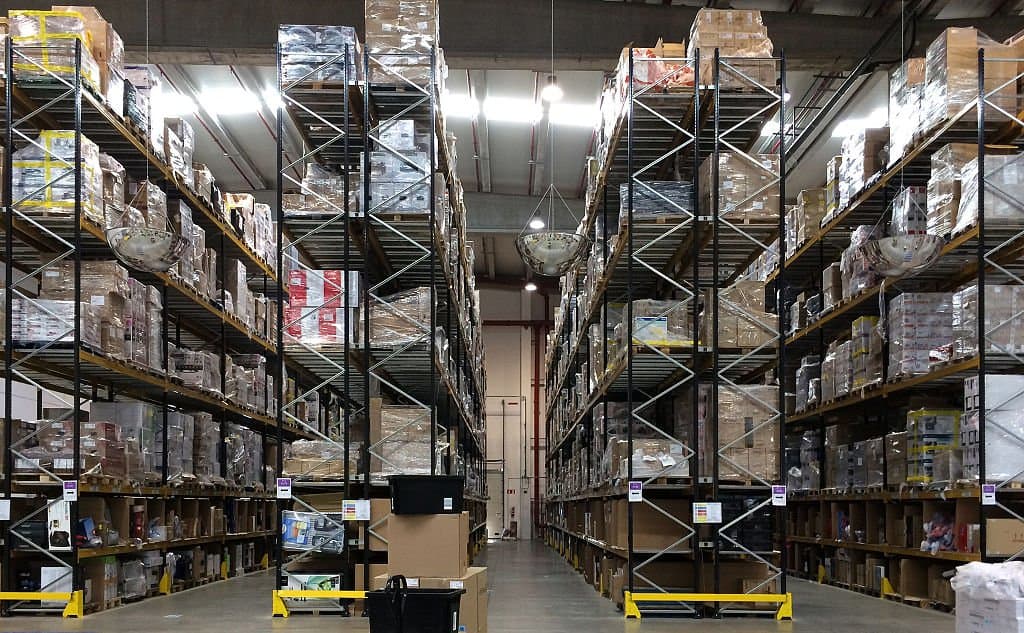I have to start off by saying that it’s simply not possible to make a straight comparison of the better options between selling on Amazon vs. Ebay. They have different characteristics that make one or the other shine depending on how and what you’re selling.
We can, however, based on these several characteristics, still look at the pros and cons of selling on Amazon vs. Ebay.
They are, first of all, two of the major multi-billion dollar online marketplaces with millions of sellers and users worldwide. Now we can look at which one is more profitable to sell on based on the following factors.
1. Marketplace Mission
Even though sellers aren’t really part of the marketplace they sell on, the mission of that marketplace can have a big impact on them.
Amazon is the most valuable retailer in the US. Their aim is to become the world’s most consumer-centric company, which means providing access to anything that people want to buy online. eBay, the third-party marketplace pioneer, focuses on enabling economic opportunity worldwide.
2. What You Can Sell
Likewise, the items you want to sell can play a huge role in whether selling on Amazon vs. Ebay is better for you.
Amazon Product Categories
On Amazon, you can sell products across a wide variety of categories – 38 to be exact. Only about half of them are available to all sellers, however.
Professional sellers and sellers who get approval from Amazon can access additional categories such as automotive parts and tools, business products, collectible coins, computers, fine art, foodstuffs, industrial and scientific equipment, jewelry, luggage and travel accessories, professional services, sports collectibles, video recordings, and watches.
A special Handmade Program is also available for selling handmade items like accessories, art, beauty supplies, clothing, home goods, jewelry, party supplies, pet supplies, sports gear, stationery, and toys and games. Individual and Professional Sellers must apply to list in this category.
eBay Product Categories
In comparison, eBay boasts an astounding 20,000+ categories. As you might have guessed, the range is much more diverse than on Amazon.
In terms of the ability to list on eBay, the requirements are more lenient. All sellers need are product identifiers. Without them, however, there’s a “does not apply” option they can click.
Specific Products Selling on Amazon vs. eBay
All in all, Amazon sells just over 600 million different products while eBay sells over 1 billion.
One major factor in selling on Amazon vs. eBay is whether you sell new or used items.
You can certainly find used products on Amazon, but only in certain categories. The marketplace focuses on new items. With the Amazon Renewed program, you can also sell refurbished items, but you have to apply and prove that the items meet Amazon’s requirements.
On eBay, used items are the norm. The site hosts both live-auction and fixed-price sales in 36 countries for all kinds of items. It started out as an online auction site for unwanted and second-hand items, and it shows no signs of changing that system.
One similarity of selling on Amazon vs. eBay is their restricted items. Overall, they both prohibit the sale of such items as alcohol and drugs and animals; and restrict the sale of such items as adult material, hazardous material, food and cosmetics.
One advantage that Amazon has for most consumers is price competitiveness. If you’re selling every day necessities, this is the place to be. If you’re selling unusual items, however, and your customers want quality over price, then eBay is your best bet. Amazon is also better for sellers with a large variety or products while eBay is great for small sellers.
3. How Selling Works
Setting up an Amazon Seller Account on Seller Central has several steps and requirements, including a business services agreement, providing business and tax information, contact information and bank and credit card information, and what products you plan to sell.
With a basic eBay account, you can start selling as soon as you accept the user agreement and give your name and email address. You can set up a business account if you want to, and simply enter the business name and email instead. Only after you list do you need to provide identity verification (phone or credit card number) and a payment method for fees, (PayPal or direct bank debit on top of the usual credit card option).
Listing Items
You need to be a Professional Seller to list new items on Amazon. You’ll need a legitimate UPC or EAN. Professional Amazon accounts also allow you to list large batches of items. If the product is already listed, you can simply sell through that same listing.
You can also list items in bulk on eBay with a regular account using their advanced listing form. Some of the features there cost a fee, but it’s not likely to be more than what it takes to maintaining a Professional account on Amazon. You aren’t required to have a barcode on eBay, and for auctions, you have the additional option of setting a duration and reserve price.
Receiving Payments
Amazon makes payments every two weeks or so directly to your bank account after deducting their fees. It takes up to five days for payments to reflect.
eBay releases payment to your bank account as soon as an item sells. If it’s a PayPal transaction, it reflects immediately on your PayPal account. Credit card payments take a couple of days, depending on whether you use a merchant gateway or PayPal processing. You can also opt to take a check, money order or cash in person if the buyer is picking up the item from you.
5. Seller Fees
Fees are a huge consideration when selling on Amazon vs. eBay. There’s a lot of disagreement on this front, but we hope to clear that up. These fees eat into seller profits, so you need to know how they will affect sales.
Seller Fees on Amazon
If you sell more than 40 items per month, a Professional account will cost you $40 per month plus selling fees that are different depending on the category you sell in. You also get access to Sponsored Product Ads. Less than 40 items a month will cost you a dollar for each item you sell on an individual account plus the same selling fees.
What you get for a sale is calculated by Amazon as follows:
(Item price + Shipping + Gift wrap) – (Referral fee + Closing fee + per item fee as applicable)
The Referral fee is calculated based on the item price and gift wrap charges and can range from 6% to 45% with a minimum of 1 or 2 dollars. The Closing fee is $1.80 for books and media items. The Referral fee is refundable if the item is retuned, but Amazon also deducts an administrative fee of 20% with a maximum of $5.
Seller Fees on eBay
On eBay, you basically pay a listing fee + final value fee + fees for additional optional features or services that you use. The listing (or insertion) fee is usually $0.30 per listing and does not vary no matter how many products you sell. Sellers can also get 50 free listings per month, so smaller sellers end up not paying this at all. The final value fee is paid as a percentage of the sale price of an item, including shipping. It’s normally 10% but ranges from 2% to 12% depending on the category. There’s also an additional 4% deductible if you get poor customer ratings or lots of returns tagged “not as described”.
For smaller sellers, eBay promises greater profits per sale, but volume sellers stand to make more on Amazon if fees aren’t too high in the categories they choose. Amazon fees are overall higher than eBay fees, plus they have a closing fee that eBay doesn’t. Even with the possible PayPal fee ($0.30 + 2.9% of the sale), eBay sellers still keep around 5% more of their profits than Amazon sellers.
6. Fulfillment
When storage, picking, packing and shipping are taken into consideration, eBay may not always come out on top in terms of cost. For larger sellers, the FBA program can be very helpful. Amazon also has other services that make a seller’s life easier. If that hold a lot of value for you, then Amazon will be the winning choice.
FBA fees are calculated based on a percentage of the sale, weight, size, picking, packing and handling. That may sound like a lot. Consider, however, that using the service has advantages like greater Buy Box visibility and customer service, on top of sellers being able to spend their time on optimization and growth rather than purchasing packaging materials, boxing items and getting them to the post office on time. It may not be too valuable, however, if you dropship or are a big brand with your own fulfillment centers.
eBay doesn’t have any in-house options for fulfillment, so sellers depend on eBay’s shipping recommendations. They also set limits on shipping charges to protect buyers of books, DVDs and video games. If sellers can manage to maintain a shipping window of 4 days and don’t charge for shipping, however, they get a badge that can increase sales by 11%. This also protects sellers from bad reviews.
A huge factor for selling on Amazon vs. eBay is customer expectations. Amazon customers are spoiled while eBay customers take listings at face value.
7. Customer Base
Amazon has 300 million monthly users vs. 167 million on eBay. Amazon is also a search engine, so many online shoppers go there first then price check on other sites. 44% of households in America have Amazon Prime, which is a service they pay for, so they are likely to prefer shopping on Amazon.
Because eBay is based on the auction model, customers expect to pay less. Ironically, because of Amazon’s quality and price promises, customers also expect competitive pricing there. Service and product quality are important on both sites, and ratings and reviews are a big factor in sales.
The bottom line is that Amazon customers are price loyal land value-focused, so if they find the same item cheaper on eBay, they’ll go to eBay. That is, as long as they can get the high level of customer service that they expect. They’ll likely stay on Amazon, however, if they tend to buy enough online to warrant Prime membership to get faster shipping and better discounts.
Reach
Amazon has 12 domains serving countries in North America, Europe, Asia and Australia. All in all, their customers come from over 180 different countries. Almost half of Amazon’s sales come from outside the US.
eBay has 25 domains in North and South America, Europe, Asia, Australia and New Zealand. Almost a third of eBay’s sales come from outside the US.
eBay has more international exposure than Amazon, but Amazon is catching up quickly.
8. Competition
One key consideration in selling on Amazon vs. eBay is the fact that Amazon is also a seller, and eBay does not market its own products. Amazon is in business for itself and often undercuts and sacrifices third-party sellers for its own benefit. If you aren’t the type of seller who’s in it to win it and can play with the big boys, Amazon is a risky place to be. This is especially true in view of the fact that Amazon has free access to all the sales data that they collect, much of which is not available to third-party sellers. Amazon retains a huge advantage, and they make very good use of it.
On eBay, you simply compete with other sellers who carry the same products. You don’t have to worry that eBay itself will use your sales data to identify profitable products and start selling them at much lower prices because they don’t pay all the fees that you do.
If you are a Private Label seller, however, you can do very well on Amazon. Just make sure that you have solid manufacturing and distribution agreements in place that will prevent Amazon from taking the ground out from under you. Otherwise, eBay is a better place for you launch to build your brand – then you can expand to Amazon later when it makes sense.
eBay has a total of about 25 million sellers compared to more than 100,000 new sellers on Amazon every month.
9. Seller Tools
Both Amazon and eBay are sorely lacking in the area of available tools for sellers. eBay provides social media integration, shop analytics and success tips for a fee. Amazon provides some reporting options, too, but mostly connected with their paid advertising platform.
There’s very little to say here because there’s very little available, but from what’s here it’s safe to say that at least eBay has a few options even if they’re not free.
Final Thoughts
If it’s not a clear choice for you between selling on Amazon vs. eBay, the best options may be to simply sell on both platforms. This is a well-known and very effective strategy for many veteran eCommerce entrepreneurs. In any case, experiencing both will help you decide which is the best for you over the long term.











